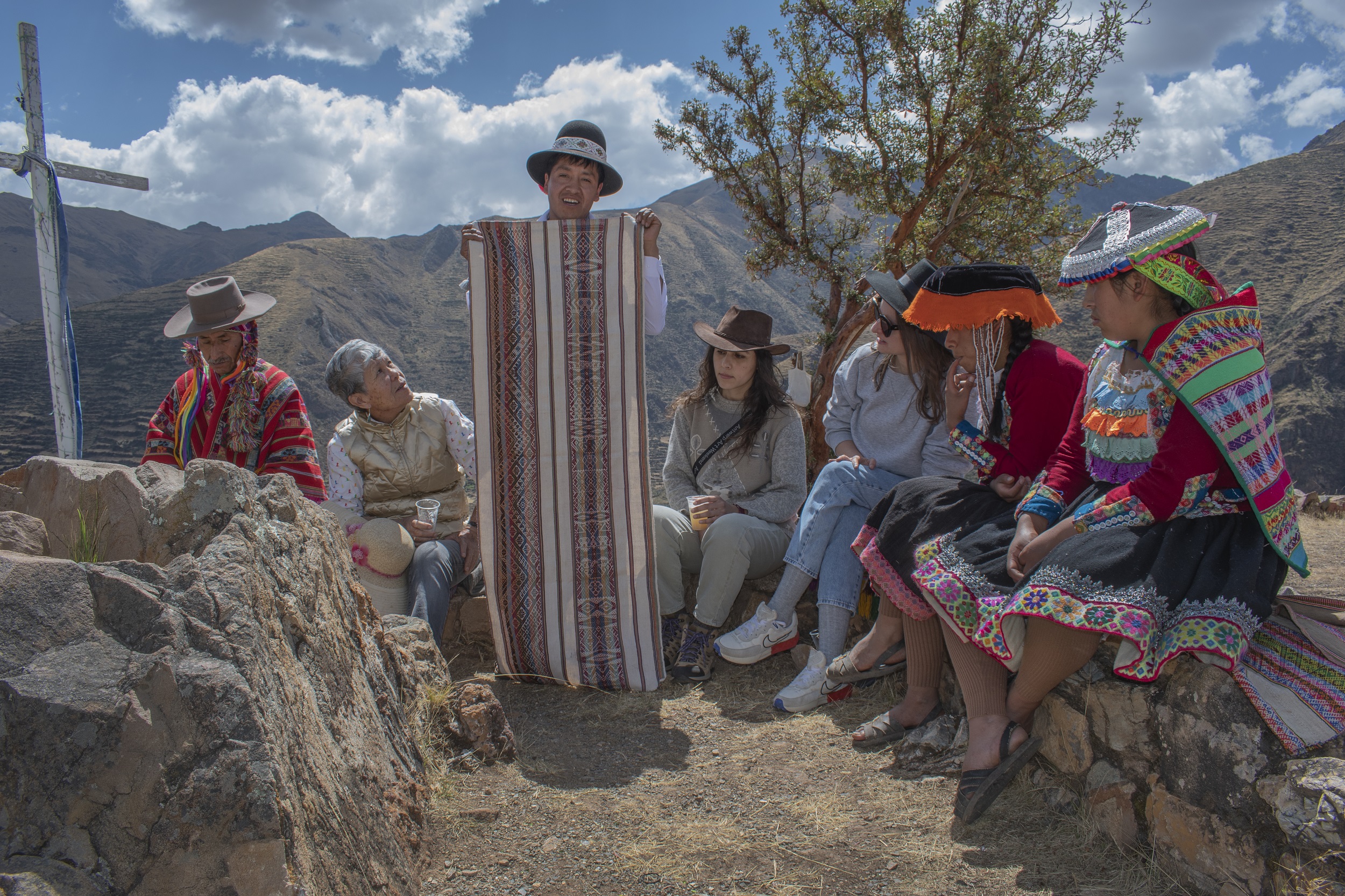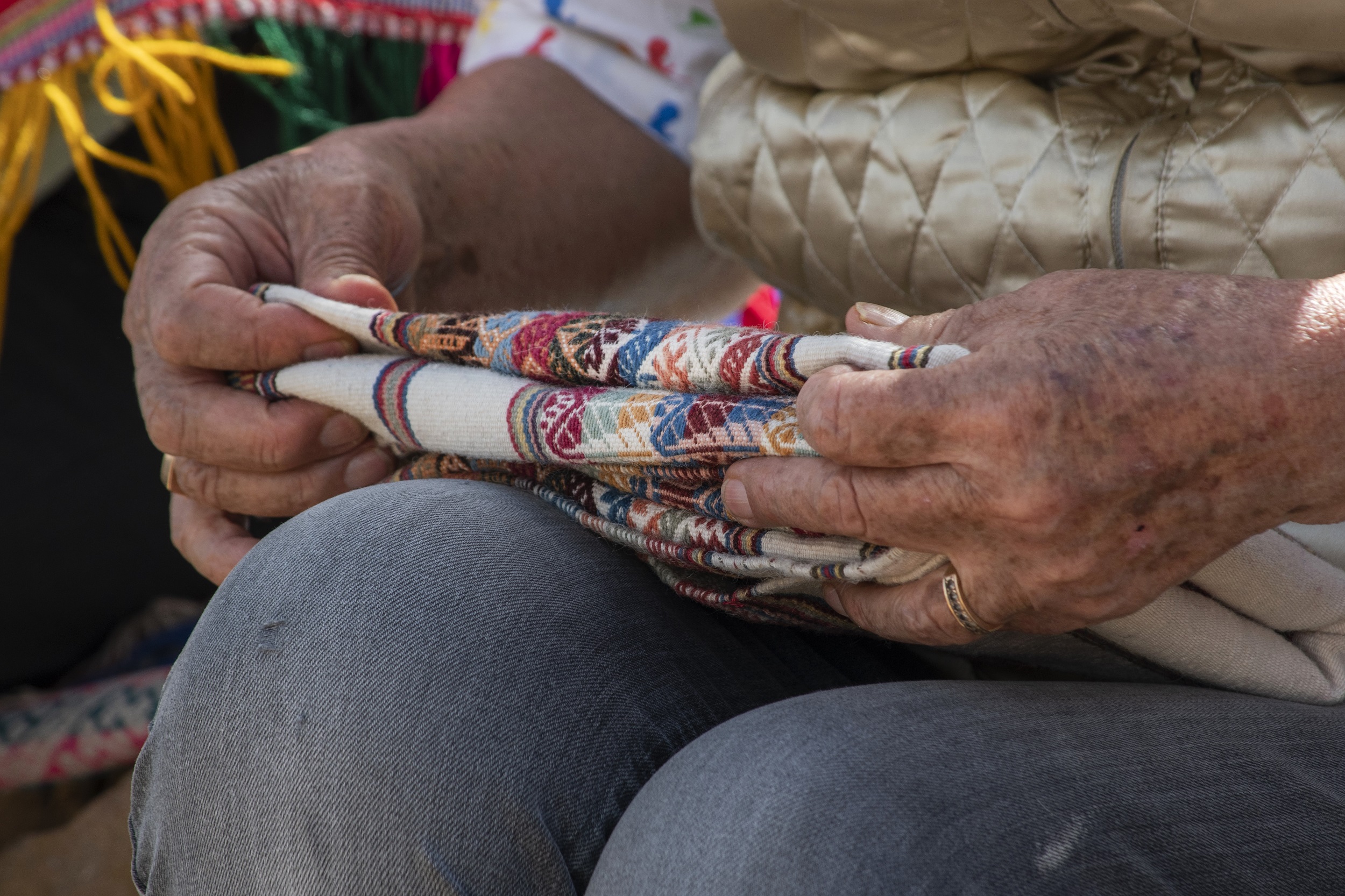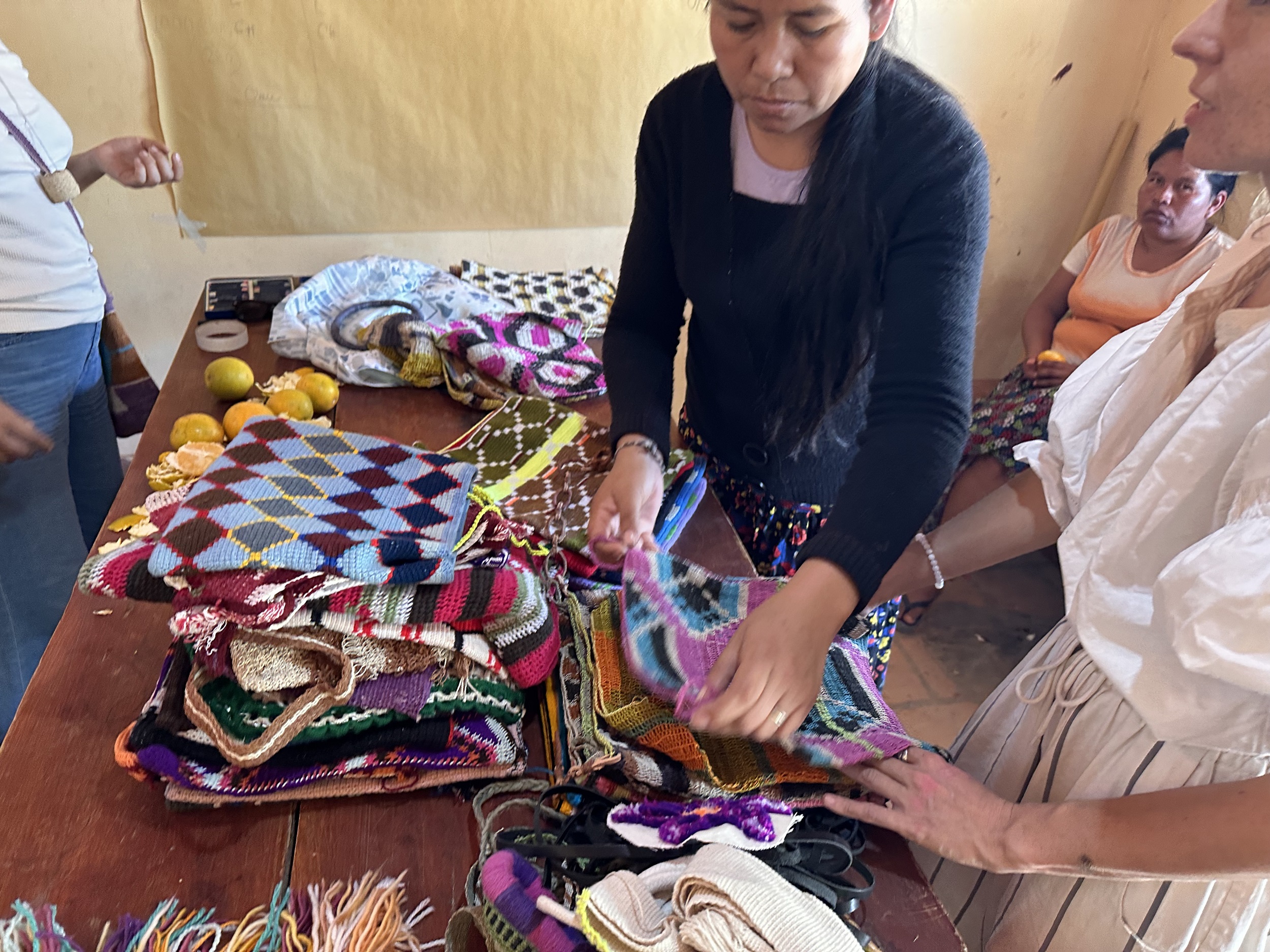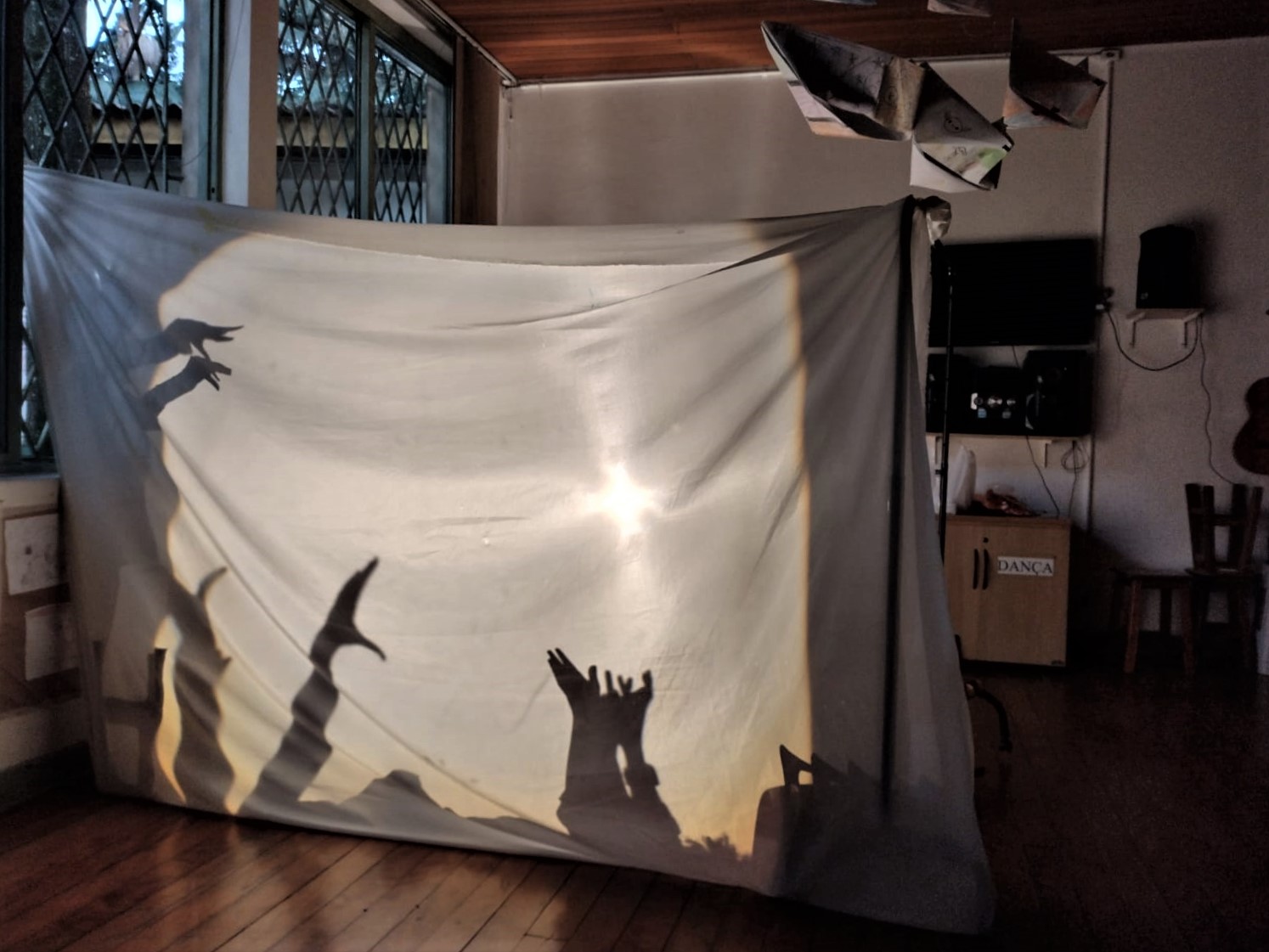Noqanchis Grupo Silät Hellen Ascoli, Luisa González-Reiche and Negma Coy
Future Weavings: Networks of dialogue and collaboration around Latin American textile art
Formative projects conceived collectively through exchanges among weaving artists, artists with training in fine arts, and cultural agents from Argentina, Guatemala, and Peru, based on formats that encourage co-authorship and artistic experimentation.
The classroom gathers the projects developed by three collectives from Argentina, Guatemala and Peru, working to generate spaces for reflection, learning, and experimentation among weaving artists, artists with a background in fine arts, and cultural agents—such as curators and scholars. All of them come together through a shared commitment to preserving the knowledge ingrained in the various ancestral textile traditions of Latin America, as well as an interest in questioning –through co-authorship– the aesthetic hierarchies that have historically separated "art" from "craft" in the region.
This learning experience, created under the curatorship of Florencia Portocarrero, includes the participation of the Noqanchis Collective (Cusco, Perú) integrated by Alipio Melo, Danitza Willka and María José Murillo; the Grupo Silät (Salta, Argentina) represented by Andrei Fernández, Claudia Alarcón and Guido Yannitto, and a collaboration from Guatemala between Hellen Ascoli, Luisa González-Reiche and Negma Coy.
NOQANCHIS ÑAWIYOQMI KANCHIS (We Do Have Eyes)
Grupo Noqanchis: María José Murillo, Alipio Melo and Danitza Willka
Pitumarca, Cusco, Perú
The NOQANCHIS ÑAWIYOYQMI KANCHIS / We Do Have Eyes project aims to create a space for participation, exchange, learning, and collective making among weavers and educators, in order to explore and deepen into the relationship between weaving, writing, and language. It is set on the singularity of the geographical space of the Andes, conceived of as a vital field that transcends the physical and connects to the bio-animic and subtle realms (Alvarado Vadillo, 2019). We intend to collectivize ideas around the gaze, literacy, and touch.
The Runasimi ('language of the people')—or Quechua—spoken today is no longer the same as that spoken in pre-Hispanic times. The ancient Indigenous Runasimi no longer exists. Instead, we have the 'mestizo' Runasimi, which is a byproduct of the colonial invasion that fiercely resists from its Indigenous roots, while revealing cultural antagonisms. Layers of epistemological impositions and destruction from the Western world on the Indigenous are perceivable. This perennial clash and conflict between the two cultural horizons inhabits within the language itself. For instance, the way knowledge is produced, validated and circulated, establishes colonial hierarchies that fragment and challenge the construction of a cultural identity emancipated from its original trauma.
In the Cusquenian Runasimi, when a person cannot read or write, one says 'manan ñawiyoqchu kani,' which literally translates, 'I have no eyes.' This is a disturbing, ironic, and painful statement when reflecting on the importance of the 'gaze' and 'vision' that forever changed the textile medium. From the artists of ancient Peru to the contemporary makers of the Andes, it is through this genealogy of 'eyes' that one of the most important textile manifestations of all times has been developed. In the Andes, one sees not only through the eyes but also through the hands. The most significant ways of seeing and understanding the world from the specificity of the textile medium have been developed through this tactile, sensitive, and profound gaze spanning more than 5,000 years of artistic continuity.
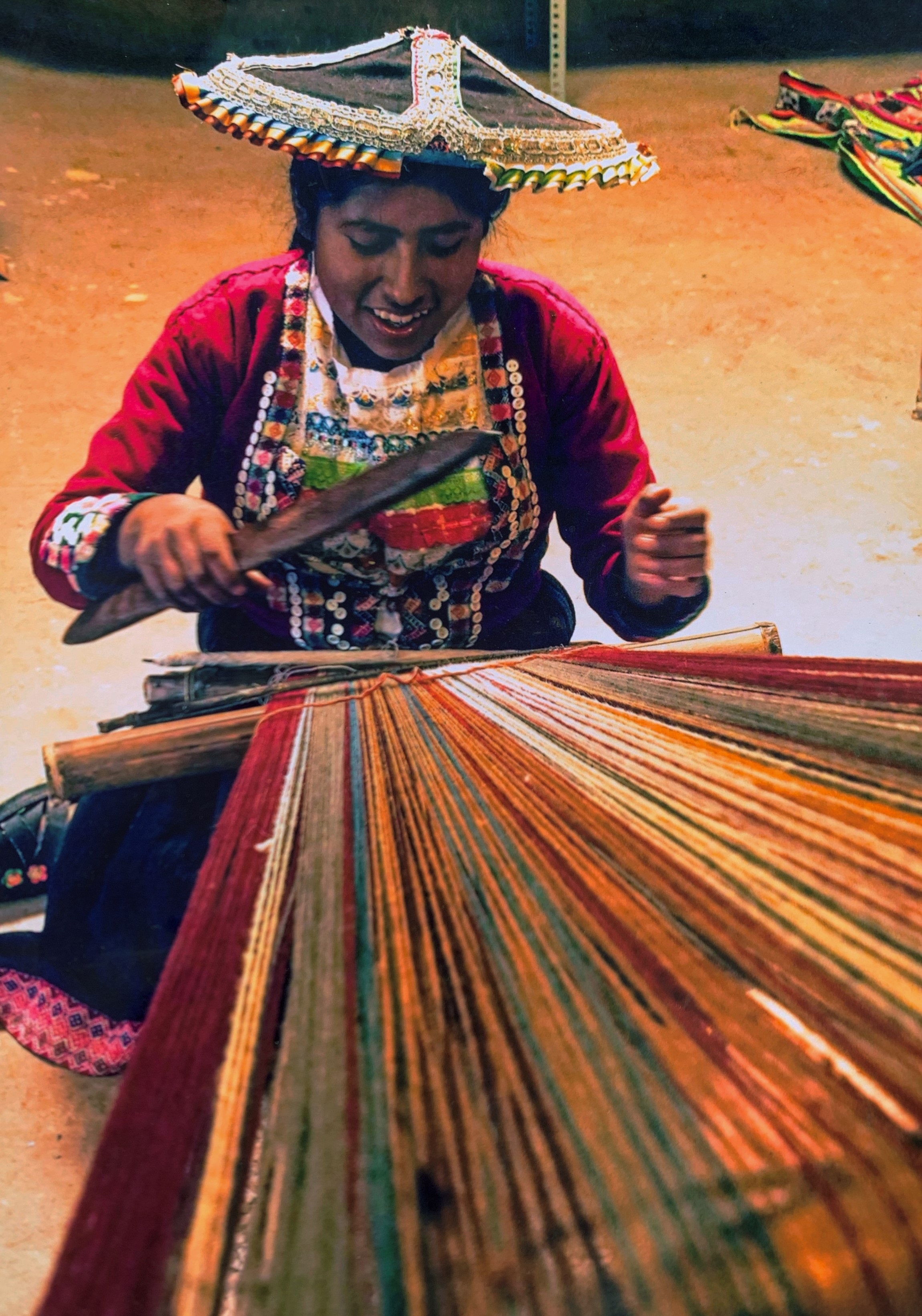
Within the framework of the Classroom program of LA ESCUELA__, the Noqanchis art collective proposes to develop the project NOQANCHIS ÑAWIYOYOQMI KANCHIS / We Do Have Eyes, based on the Andean concept and practice of rimanakuy. The main objective of rimanakuy, whose linguistic structure comprises the suffix '-naku,' indicating reciprocity of actions, is to generate a space for mutual dialogue and openness to an enriching exchange of (cosmo)visions.
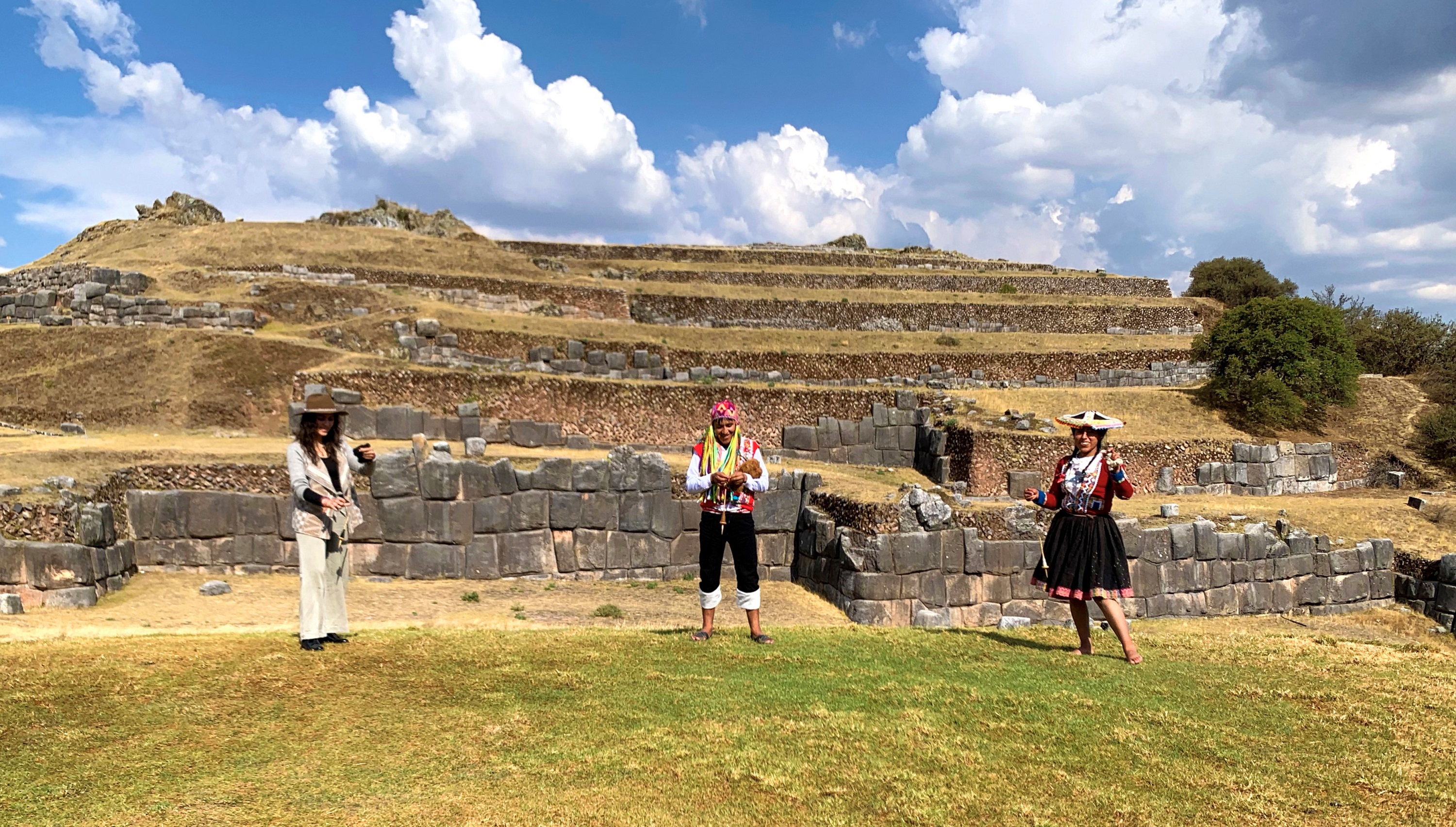


This meeting will articulate the communitarian, the artistic and the pedagogical spheres. It will take place in the district of Pitumarca, known as "the capital of Andean weaving", and also the hometown of Alipio Melo and Danitza Willka. It will feature the presence of the geographical space itself, the Apu Uyayoq [‘sacred mountain that has a face’], the Noqanchis art collective, guest weavers, and the participation of Georgina Maldonado, a Quechua educator and cultural-linguistic translator. Georgina's experience as an elementary school teacher, based on a pedagogy rooted in the Andean world through Runasimi, rural life and play, will serve as a bridge for the rimanakuy to actively transit between Quechua and Spanish, between the Western world and the Indigenous world.
The meeting will include a visual accompaniment of the textile project currently being developed by Noqanchis, which involves the creation of an archive consisting exclusively of eye fragments used in Peruvian textile art, from the earliest pre-Hispanic cultures to the present day. The rimanakuy project NOQANCHIS ÑAWIYOQMI KANCHIS / We Do Have Eyes intends to open spaces to reflect on the socio-cultural meaning of eyes; the division of the world into dominant literate and non-literate; as well as the multiple forms of literacy that go beyond alphabetic literacy, such as textile, Indigenous, and heterogeneous literacies.
The Eyes of Wichí Weaving
Grupo Silät, represented by Claudia Alarcón, Andrei Fernández and Guido Yannitto
Santa Victoria Este, Salta, Argentina
The Eyes of Wichí Weaving aims at fostering dialogues to embrace the meaning of textile creation among the Wichí people, alongside a group of organized weavers who seek to approach contemporary art worlds.
Traditionally, weaving among the Wichí people has had the function of making bags for collecting food. As the bags are filled, the eyes of the knitting—the gaps created by the stitch of the binding—open up, just as the eyes of these women open wide when they stop being girls and start learning the choreography of creating knit geometries. The Wichí name these abstractions after fragments of beings that roam their territory: the eyes of the jaguar, the tracks of the carancho, the ears of the mulita, the turtle shell, the seeds of chañar, and so on. Weavings have been made in the communities since time immemorial with chaguar plants (Bromelia hieronymi), a sacred material that, according to one of the founding myths of the Wichí, connects them to the cosmos, as before being women they were stars.
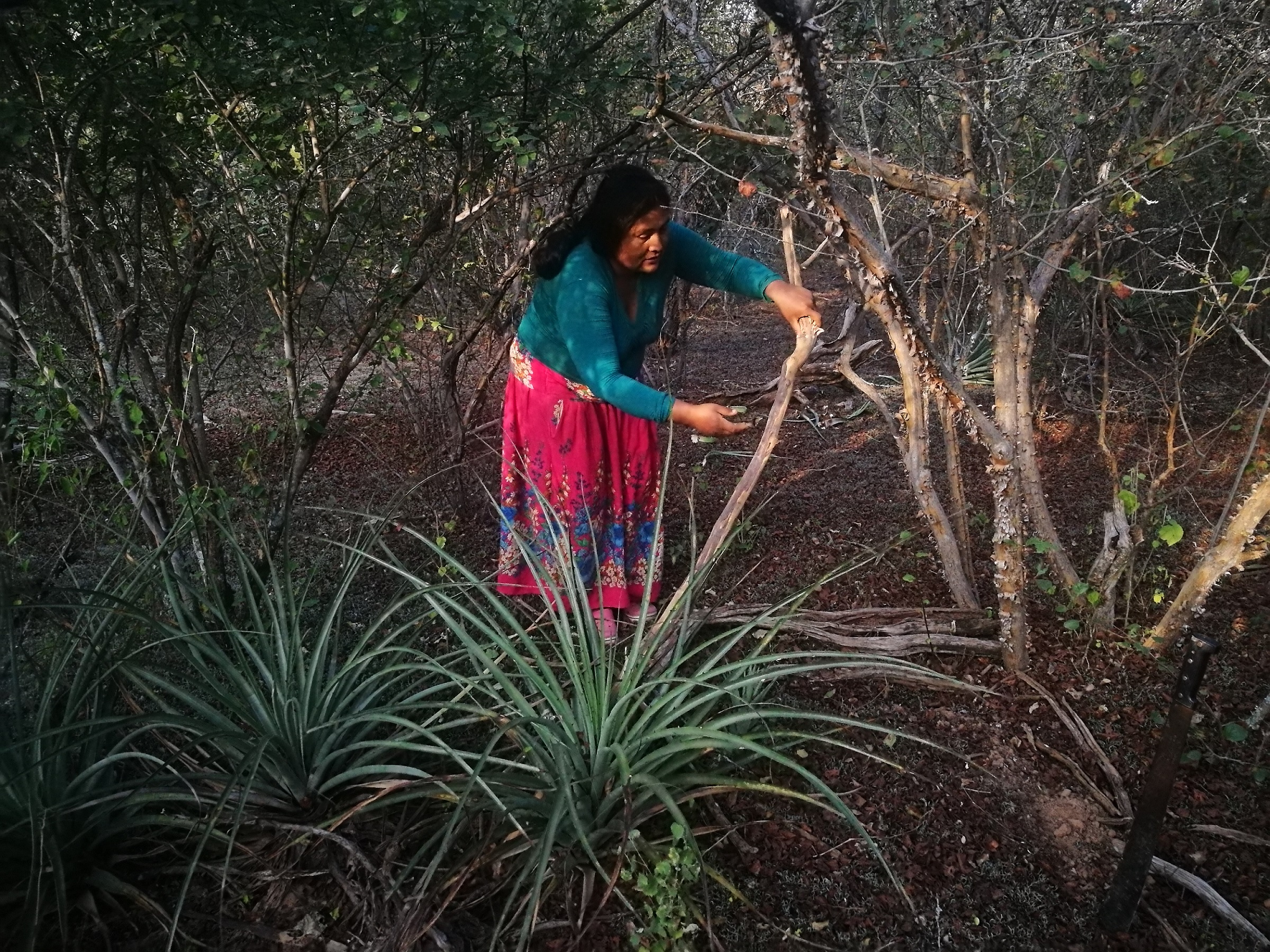
We take up the challenge of strengthening a space for intercultural encounters in order to exchange ways of relating to the images we produce and share from different backgrounds. This is part of a work of physical and symbolic displacements that question the need for changes in the meaning and use of inherited knowledge.
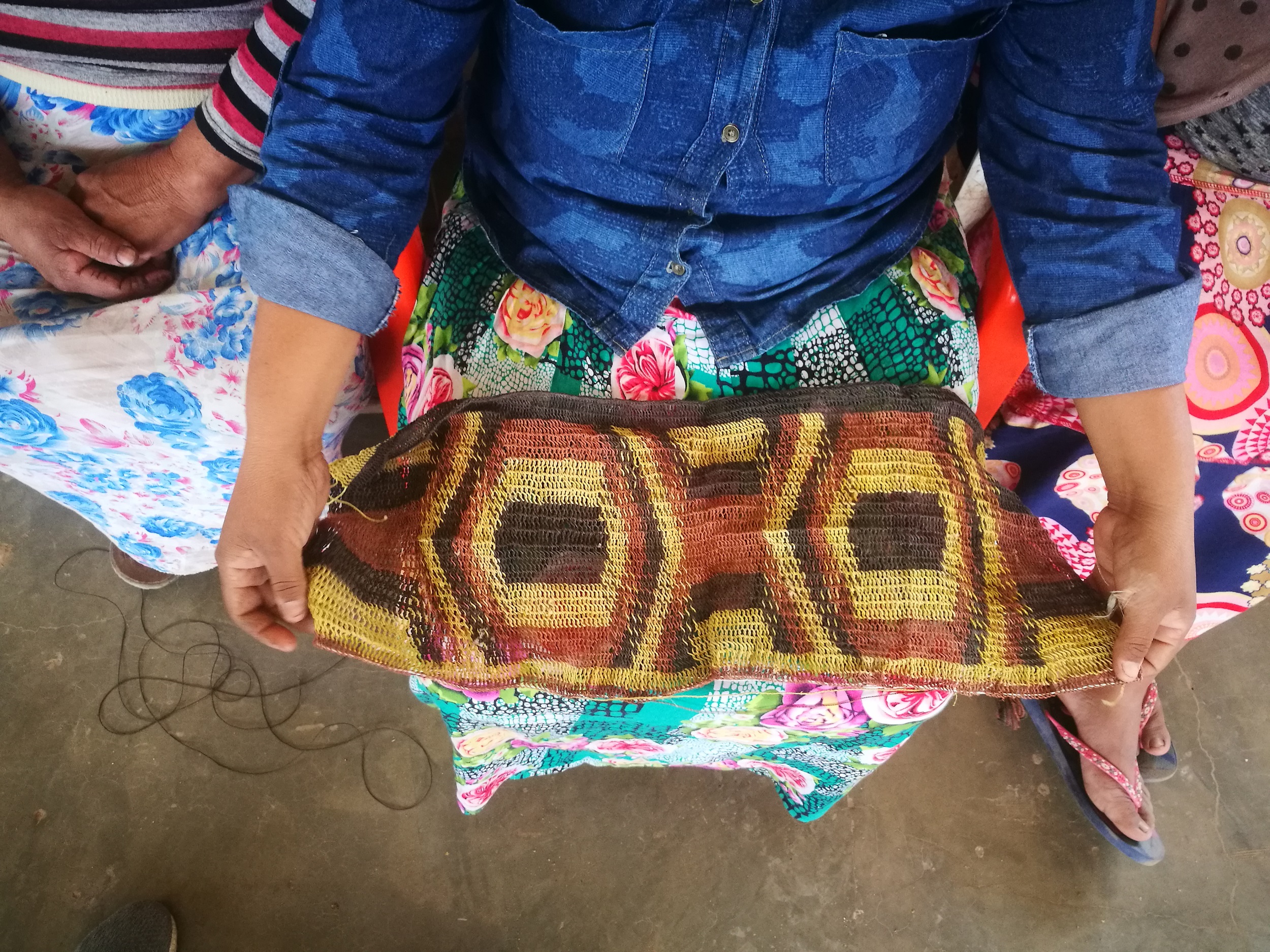


Our goal is to facilitate a new work experience with a group of weavers to explore and expand the creative capacities and design possibilities that their techniques allow. We aim to reflect on the creative processes by asking, where do they come from and how is a design proposed? What strategies and legacies do we use to choose a form and explore it? What are the motivations for making a weaving that is not for sale but for use in the community? These are some of the questions we will try to address and which will point to further cases, or prompt new working methods.
X E
Hellen Ascoli, Luisa González-Reiche y Negma Coy
Ciudad de Guatemala, Guatemala
Several ethnographic and anthropological texts describe the backstrap loom from an external position, narrowing its understanding to technical aspects, as a tool used for the production of canvases that later become Mayan clothing. Such an approach to the backstrap loom is limited to a reading of its designs as something symbolic and laden with meaning; thus, it is assumed that the designs are the result of what a person has intentionally inscribed on the loom. However, the very worldview of the native peoples—and what we can call their ontology—understands the being as intertwined with its environment, where humans are not the only beings that produce things or meanings. This vision engages in dialogue with a neo-materialist approach, which understands that the production of meanings and their materialization (always a material-semiotic dynamic, according to Donna Haraway) is part of the becoming of the world, and this is something in which diverse forms of human and non-human existence participate.
This has led us to approach the backstrap loom not only as an instrument or means but also as a collaborator in a process through which "part of the world becomes intelligible to another part" (Barad, 2007), and which also involves diverse materialities. Therefore, our proposal moves us towards a practice of thinking and doing-with, approaching the backstrap loom as an active collaborator in the regeneration of knowledge and worlds. From a critical standpoint toward anthropocentrism and its tendency to representationalism as limit-producing practices (dismembering agencies or affecting capacities between bodies or materialities), we seek to cultivate disposition, "technical operators of availability" (Despret, 2022) that no longer function as a means, cause, or explanation but as an ecological niche—that is to say, a set of conditions for possibility.
This implies an openness to allow ourselves to be instructed by the material-semiotic dynamics of the loom and to pay attention to what presents itself as a request: when something requires a response (a responsibilization).
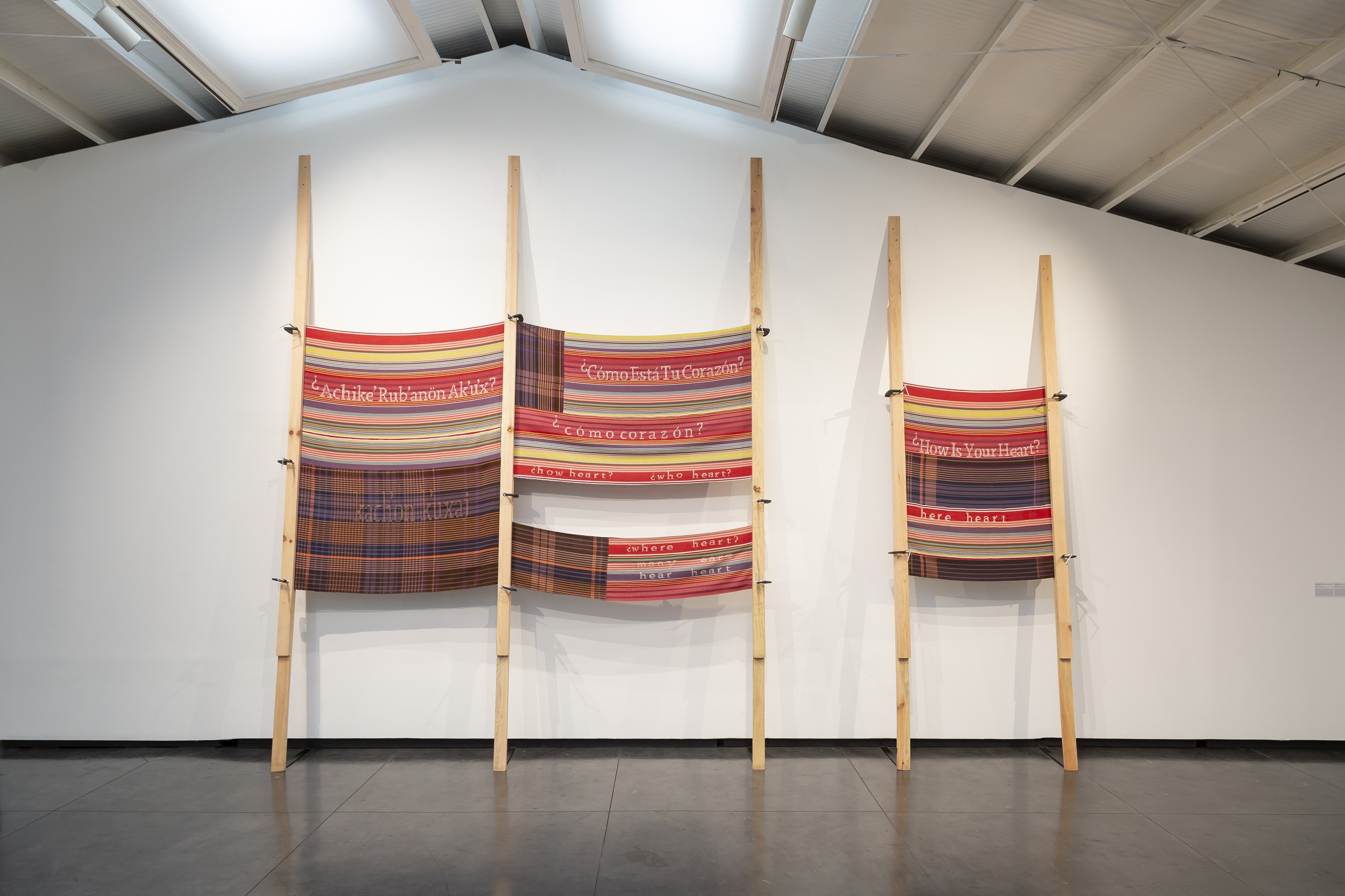





The backstrap loom, thus, invites us to get involved through X and E. These figures are formed in the process of weaving, marking the spaces between the threads when warping, and again when combing the loom when it is assembled. In other words, X and E present themselves in the in-between-spaces, continuously showing gaps or absences. Paying attention to what emerges in the interstices allows us to expand our sensitive capacities and the possibilities of affectation. This is a particularly relevant issue in a territory such as Guatemala, where absences and disappearances (human and more-than-human intertwinings) abound.
By allowing ourselves to be instructed by the loom and all the material elements that participate in it as a phenomenon, we become part of a practice of making commons, an exercise of regenerating relationships where other forms of remembrance (or memory practices) are possible. It is thus a matter of cultivating hospitality strategies rather than skills, and doings rather than representations. This becomes a performative exercise of intensifying relationships (something that happens all the time and not at the end when applied to a particular community). In this process, we have become interwoven with a wide diversity of beings: owl flapping, food, minerals, natural dyes, childhood memories, grandmothers, and other forms of heritage.
The performative approach allows us to think of X and E not in symbolic terms but in their agential materiality interwoven with multiple present and absent bodies. Through affective explorations that depart from the everyday, we progressively empower each other, expanding our affective capacities. Each encounter is an occurrence or a relational event (not only human) in which doings are re/generated and integrated into the becoming of reality, the weaving of worlds. This is how we move away from a traditional notion of pedagogy (which means ‘a father's guidance’) to affect ourselves-with forms of instruction, co-learning, and collective re/generation to give way to joyful and fairer practices of cultivating existence.
Using a non-representational methodology, guided by the X's and E's offered by the backstrap loom, we co-produce texts, audios and images, inviting others to let themselves be affected and involved in these practices.
